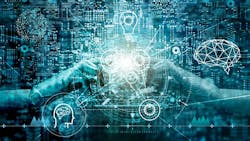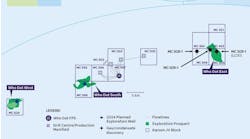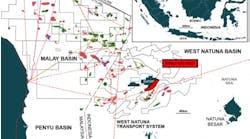Robots: over-promised, over-hyped, but now real
Editor's note: This Beyond the Horizon column first appeared in the May-June issue of Offshore magazine. Click here to view the full issue.
By Mark P. Mills, Manhattan Institute senior fellow Strategic partner, Montrose Lane
It’s old news in oil and gas industries that there’s a skilled labor shortage, as there is in every industrial sector. And it’s getting worse due to demographics, the “silver tsunami,” and cultural realities enervating students’ appetites for pursuing trades in “old” industries, even though they’re essential for all the new, shiny products and services.It’s long been known that industrial automation can help here, by amplifying the effectiveness of those, of any age, with skills. But automation has done little to alleviate the skills gap for most tasks in most industries.
Of the millions of industrial robots in the world today, the majority are isolated to bolted-down or high-volume tasks, found in automobile manufacturing or similar factories. As the need for task flexibility rises, or the size of the firm shrinks, the robot share shrinks faster. Even for firms of over 500 employees, just half have industrial robots. And you won’t find any industrial robots in 90% of America's manufacturing enterprises.
That isn’t because managers don’t see the need. That automation yields more output per employee is intuitively obvious and borne out by history. Robots are underused in industries because of a simple fact; they haven’t been good enough, yet. Until now, there wasn’t any prospect for robots that both match or exceed human performance and can be reassigned to new tasks, and that can also work safely alongside people, instead of isolated and bolted down, or limited to fixed tracks.
We’ve seen myriad demonstrations and stunts in the race to produce real robots. Only recently have engineers finally built anthropomorphic robots, even if most are not yet commercially viable. As with the arrival of the automobile age, the (true) robot is made possible by the confluence of a suite of technologies. The car itself was only possible because of the independent maturation of high-strength steel, internal combustion, and oil refining. For robots it’s the arrival of powerful micro-motors, vision “chips” enabled by AI, and lithium batteries. While the latter two components have received the most attention, useful robots wouldn’t be possible without the contemporary and remarkable 50-fold gain in the power-to-weight ratio of tiny motors over the past several decades.
Boston Dynamics’ human-like Atlas robot meets that definition of a true anthropomorphic robot, as does Digit from Agility Robotics, for example. While Digit is less agile, it is both cheaper ($250,000 versus a rumored $1 million) and commercial now. Nonetheless, Atlas illustrates the near future of bots that have human-like capabilities to run, jump, back-flip and navigate autonomously.
Such robots vastly surpass the best that could be built as recently as 2015 in a Grand Challenge from DARPA (Defense Advanced Research Projects Agency). That contest was industrially-oriented: an untethered robot needed to ascend a staircase, open a door, and turn a valve – tasks inherent to operating within a human environment, and all previously beyond the capabilities of any robot. In late 2021 DARPA held another challenge, where teams competed using wheeled, tracked, or walking robots to perform mining-like tasks in a network of caverns. One of the contestant’s robots, for example, was able to survey and build a detailed subterranean map in one hour, a task that entailed 100 person-hours of human surveyors prior to the contest.
Two years ago, Boston Dynamics offered for commercial sale (base price at $74,500) its autonomous, ambulatory four-legged automaton, Spot, the same year Digit went on the market. That such robots are now being offered for sale is more than a mere curiosity. It will be seen in hindsight as a Model T moment in history.
Digit’s skills target warehouse-like tasks which similarly consume valuable (human) time in industrial domains. And Spot, initially, is seeing deployment for safety surveillance on offshore oil platforms, refineries, and construction sites, on farms, and in factories. Inspection is self-evidently critical but inherently repetitive and is the kind of drudgery that lends itself to error and oversight; i.e., ideal for robots while letting people upskill for other tasks.
At least two dozen companies are designing pre-commercial anthropomorphic or mobile robots, from start-ups to industrial giants such as Toyota. Elon Musk announced that Tesla would soon commercialize a walking robot called Optimus.
The warehouse “logistics” markets has become the hotbed for robot development and deployment, forecast to displace automotive as the growth sector, with spending forecast to grow 300% more over the next five years than the past five. Given the close alignment in tasks and performance metrics, all that commercialization will accelerate robot capabilities for the adjacent heavy industries.
Soon, the labor-productivity boost from robotification will echo what happened a century ago with industrial mechanization. More business, more services, new kinds of jobs replacing old ones, and more wealth and well-being.



